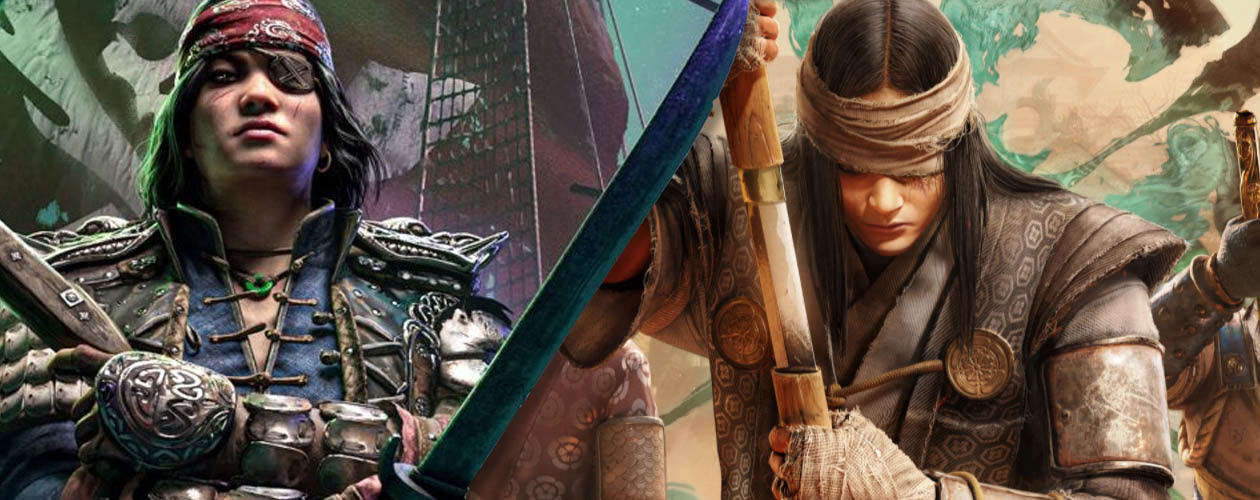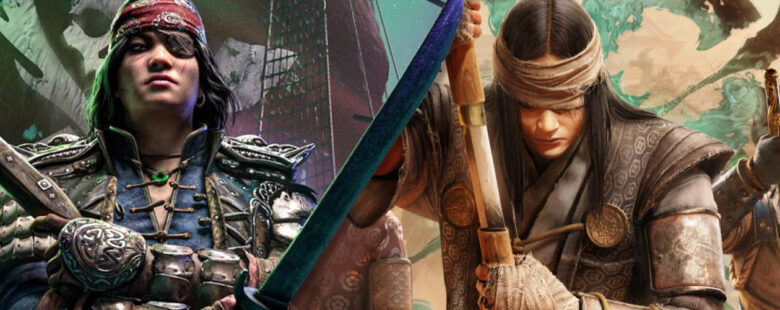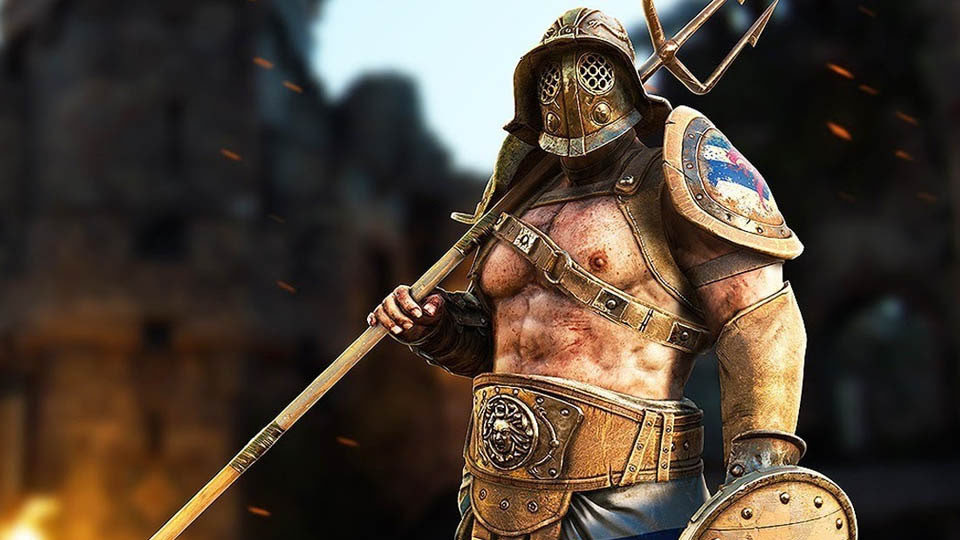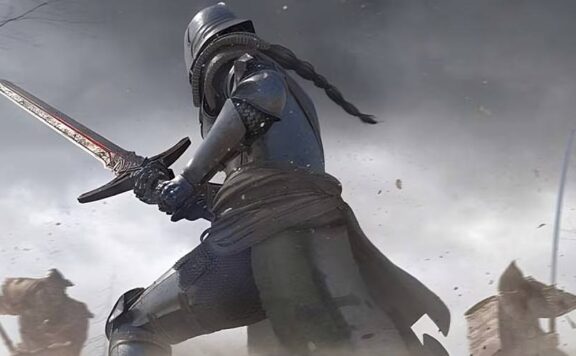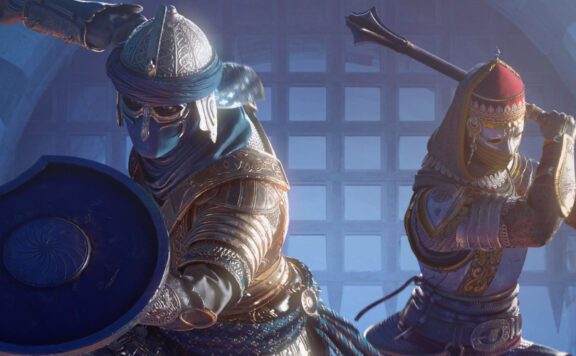First released in early 2017, For Honor has shown remarkable longevity. While many multiplayer titles have come and gone over the past half-decade, For Honor is still diligently marching ever on. It’s an impressive feat, one only possible thanks to Ubisoft’s continued support of the game. New content has come, if not thick and fast, then certainly with reliable consistency. New factions, new play modes, and – perhaps most importantly – new heroes, The Pirate having joined For Honor ahead of the game’s fifth anniversary.
Each new fighter has kept an enthusiastic core group of players returning week after week, month after month, and year after year. These new player characters are arguably the key to For Honor’s success. After all, what is For Honor if not a virtual answer to the school playground question, ‘Who would win in a fight, a Viking or a Samurai?’
Whilst For Honor is eager to make known that its setting is entirely fantastical, there is no doubt that its varied range of fighters are heavily influenced by different historical periods. There’s the ferocious Warborn, a clear tip of the battle axe to the Vikings. Then there’s the chivalrous Iron Legion, inspired by Latin Knights from Medieval Europe. The Dawn Empire evoke the Samurai of Feudal Japan. Whilst new kids on the block, Wu Lin, channel the distinctive aesthetic of ancient China. It’s a brilliant premise, enabling players to break through the dreary restrictions of time and space in order to have the opportunity to pit a battle-weary Knight against a formidable martial arts master.
How then, has real-world history informed the character design of For Honor? Has it at all? Or has cinema and fantasy had a much greater impact? How does Ubisoft keep on making awesome new characters for its devoted players to enjoy? And why does that pesky Peacekeeper keep on getting the best of me? Those were the questions that kept slapping around the inside of my head as I tried, and failed, to win a round of Breach.
Fortunately, I knew just who to speak to in order to get the answers: Andrew Jangwoon Im, For Honor Art Director, and Stefan Jewinski, Associate Game Director. Luckily, they were happy to oblige. But would they be happy after I hit them with my first hard-hitting question: just what is it that makes for a great For Honor character?
There are various elements that add to the greatness of a For Honor character,” replied Jewinski. “The connection between the character’s weapon, their culture (i.e. Knight/Samurai/Viking/Wu-Lin) and their ‘gameplay gameplan’.”
“The latter gives our heroes different personalities, such as being an aggressive attacker, taking less damage by being tankier or have more armour, fight in such a way that they set up combos with their teammates, etc. Having a ‘gameplay gameplan’ for heroes brings creativity and fun for the player, especially when they learn how to best utilize the heroes’ kits.”
But what about real-world history, how has that influenced the team’s character design?
“Each Hero draws from real elements of their historical depiction, the weapons in general or some of the armors for example,” explains Im. “However, For Honor doesn’t aim at historical accuracy with the heroes’ representation. The idea fore and foremost is to convey the fantasy surrounding those great warriors, push this fantasy to its limits, while making their existence in the world of For Honor believable.”
This makes sense. Take the Gladiator class by way of an example. No Roman gladiator, be they the fish-like ‘Murmillo’, the secateurs wielding ‘Scissor’ or the heavily armoured Provocator, looked like or had the combination of weapons and armour of the For Honor version. Yet one peek at For Honor’s Gladiator, with their deadly pronged trident, closed helm, and arm protecting manica, and the first thing anyone will think is Roman gladiator. It is a mythologised fantastical interpretation, for sure, and one with many anachronisms, yet its historical influences are clear and in turn provide the avatar with copious amounts of distinctive personality. It all makes for a character that is instantly identifiable with only the briefest of glances.
This leads to an obvious follow-up question, if both a combination of historical accuracy and fantastical interpretation are needed to craft the perfect player character, what is the correct balance of each component? Stefan had the answers:
The balance between authenticity and fantasy really depends on the character. For some, we want to be authentic and represent their culture, but for some others we explore more the fantasy side. For example: Warden is a hero that represents the kind of armour knights wore, along with their signature weapon, the broadsword. Their moves and stances are based on historical context/investigations such as the German longsword and Historical European Martial Arts (HEMA). We also have heroes such as Hitokiri, who takes on a more fantasy-side depiction. There are some historical touchstones we pay homage to, such as the traditional Japanese masks, but it’s likely that no one wore this to battle or carried her weapon, the Ono axe. There are heroes that are in-between the authenticity and fantasy realm of things. Some of the pieces of the different armour sets that each hero has are based on some pieces you can find in museums. An example would be with Kyoshin, who has an Oni Mask derived from Japanese folklore and used in Japanese Noh theatre. In this sense, it’s cool to have some heroes rooted in authentic pieces to give a neat sense of culture. But during development, it takes a life of its own and becomes unique.
How about historical research – how does Jewinski and the team go about researching potential new character concepts? “The research begins with the weapon at the start. The weapon is meant to represent a certain period of time, a faction. Sometimes it’s quite authentic but sometimes we’re pushing the fantasy. From there, we research the different ways the weapons are meant to be used, such as the intent of the shape, weight, makeup, and real strikes or techniques, and then build the character from there.”
With all this research, does For Honor inspire players to learn more about history after they’ve had their fill of intense virtual battles to the death? “The game doesn’t aim at being historically accurate,” Im responded. “That said, we hope that some players will find representative cultural elements in the game within the gear, weapons, map architecture, factions, etc. Some players, however, mentioned that they tried and/or picked up HEMA because of For Honor!”
Seeing as Historical European Martial Arts involves participants wearing armour, wielding broadswords and training to compete in full contact sword fighting tournaments, I’d say For Honor certainly develops an interest in players to learn and discover more about history. After all, what better way to experience what it might have been like to fight in a medieval battle than to be repeatedly clobbered by a genuine battle axe?
Playing with History is our ongoing series spotlighting video games and the real-world people and events that inspire them. From walking with dinosaurs in Jurassic World Evolution and talking real-life zombies in Days Gone, to learning about the Peaky Blinders, and chatting Ghost of Tsushima with a samurai expert, there’s plenty you may not have known about your favourite video games.
